Best Orlando Treatment for a
UPPER TRAP PAIN
Are you not able to continue your cherished hobbies or everyday activities because of sharp pain in your neck when you move? With our expert doctors’ help, you can get to the root of your symptoms and get back to doing what you love quicker and easier.
Read More Ask A QuestionBest Orlando Treatment for a
UPPER TRAP PAIN
Are you not able to continue your cherished hobbies or everyday activities because of sharp pain in your neck when you move? With our expert doctors’ help, you can get to the root of your symptoms and get back to doing what you love quicker and easier.
Read More Ask A QuestionHere Is Everything You Need To Know About Upper Trap Pain, What Causes It, and The Best Way to Treat It
Click the tabs below to get direct answers to your questions
What is upper trap pain?
Cervical radiculopathy occurs when a nerve root coming off the spinal cord becomes compressed. The compression can occur for various reasons. In younger people, it may occur when a cervical disc herniates due to trauma. In older individuals, it commonly occurs spontaneously as a result of arthritis or decreased disc height in the neck region.
The cervical spine consists of 7 cervical vertebrae (the bones that form the neck region). Each vertebra is separated by a gel-like disc. The discs provide shock absorption for the spine. The spinal cord travels through a canal in the cervical vertebrae. Spinal nerve roots extend from the spinal cord and branch off going to specific locations in the arm. The spinal nerves send signals to our muscles for movement as well as sensations that we feel in the entire arm. The spinal cord is like a tree trunk, and the spinal nerves are like the tree branches. If an impingement or abnormal pressure is placed on a branch near the trunk, everything along that branch will be affected.
What are common causes of upper trap pain?
Spinal nerves can be impinged by:
- Arthritis or disc wear-and-tear with age
- Herniated or bulging discs from trauma or degeneration
- Spinal stenosis, which is a narrowing of the spaces in which the nerves travel
- Tumor, which can be benign or malignant, impinging the nerve root
When the spinal nerves
What are symptoms of upper trap pain?
Symptoms of cervical radiculopathy vary depending on the nerve root
Pain in the neck, shoulder blade, shoulder, upper chest, or arm, with pain possibly radiating into the fingers following the path of the involved nerve root.
- Pain described as “sharp” or “pins-and-needles” or “popping sensation” in
cervical region. - General dull ache or numbness anywhere along the pathway of the nerve.
- Weakness in the shoulder, arm, or hand.
- Pain that worsens with certain neck movements.
- Pain that improves when the arm is lifted over and behind the head (relieving tension on the spinal nerve).
These symptoms may also be specific to the nerve root involved:
- C5 nerve root – weakness in the deltoid muscle (front and side of the shoulder) and upper arm; shoulder pain and numbness
- C6 nerve root – weakness in the bicep muscle (front of the upper arm) and wrist muscles; numbness on the thumb side of the hand
- C7 nerve root – weakness in the triceps muscle (the back of the upper arm and wrist); numbness and tingling in the back of the arm and the middle finger of the affected hand
- C8 nerve root –weakness with hand grip; numbness in the little finger
The most common nerve root levels for this condition are C6 and C7.
Where does it hurt?
In most cases of upper trap pain, patients report constant ache and burning muscle pain right in the upper trap muscle and neck area. This can happen on one side or both sides. If this is a chronic
To Get A "Insider's Look" At Our Treatment Approach And How We Get Results...
Click Below To Watch Our Exclusive Webinar! It's Simple, Short, and It's Free!

- Learn The Essential First Step... So You Can Get Pain Free Again
- See Why Treatment Needs To Be Individualized, Not Standardized...So You Get Faster Results!
- Learn How You Can Save Money...So You Don't Have To Waste $1000's On Unnecessary Treatments
To Get A "Insider's Look" At Our Treatment Approach And How We Get Results...
Click Below To Watch Our Exclusive Webinar! It's Simple, Short, And It's Free!

- Learn The Essential First Step...So You Can Get Pain Free Again
- See Why Treatment Needs To Be Individualized, Not Standardized...So You Get Faster Results
- Learn How You Can Save Money...So You Don't Have To Waste $1000's On Unnecessary Treatments
Can upper trap pain be treated?
Yes, upper trap pain can be treated and with great results. Even better, many times it can be treated conservatively without needing injections, pain medications, or surgeries. The key to treatment is to solve the root cause of your pain so you can get the best results and a
Some root causes of upper trap pain can be:
- Forward head posture
- Rounded shoulders
- Weak mid back and shoulder blade muscles
- Overload to the upper trap muscles
- Tight neck and mid back
If you have failed multiple treatment approaches already, the clinician missed the real root cause of your pain and was just chasing the symptoms. The pain or symptom is the effect, not the cause. What do I mean by this? For example, say your fire alarm goes off in your house. Its purpose is to protect you and make you aware something is wrong and that there is a fire in the house. “The alarm” is like your pain (your body’s way of telling
Additionally, there is a common root cause that many clinicians misdiagnose. They treat the upper trap pain with a cookie cutter approach hoping it will work, thinking it is an actual simple muscle problem. They tend to rely on stretching, ultrasound,
The first step in treatment is to identify the root cause of your pain. A specific and individualized treatment approach for your type of pain can lead to a successful outcome for you and resolve your symptoms. For the long term too! This is why you can’t rely on a standard cookie cutter approach and you need a customized and individualized treatment approach specifically for your type of upper trap pain.
What happens if it goes untreated?
Minor case – If it is a minor case of upper trap pain, research shows that many acute cases of pain may spontaneously go away in 4-8 weeks. But who wants to wait 8 weeks to get pain free? Let’s try to solve the root cause of
Severe case – If it’s more of a severe and chronic case of upper trap pain, your pain will probably start to worsen and increase because the root cause of the pain is not being treated. Many people turn to pain medication at this time but this only blocks the pain for short term. You may not feel the pain when taking pain medications, but the underlying problem is still there. Many people say after the pain medication is stopped, then usually the pain returns and sometimes it returns even worse. This is when you may experience chronic muscle pain, radiating pain into
What outcome can you expect from treatment?
As we’ve discussed, the first step is to solve the root cause of your upper trap pain. This is the most essential step to plan a treatment specialized for you and your unique type of pain. Your root cause will guide your treatment and dictate what is the best way to treat your pain. This, along with identifying risk factors that may be predisposing you to have your pain and injury, will allow you to start getting pain free again. The next step is to start decreasing pain, modifying activities, and start addressing all of the impairments causing your pain which we discovered during your evaluation. With each session, pain should start to decrease and you should start to regain range of motion with less pain and symptoms. Any radicular and referred pain should resolve fast as well. At this point, we begin light and basic strengthening only if it does not increase pain. Treatment will consist of a lot of manual therapy and light exercises.
The next step is to achieve full range of motion, (which should correlate to being
To Get A "Insider's Look" At Our Treatment Approach And How We Get Results...
Click Below To Watch Our Exclusive Webinar! It's Simple, Short, and It's Free!

- Learn The Essential First Step... So You Can Get Pain Free Again
- See Why Treatment Needs To Be Individualized, Not Standardized...So You Get Faster Results!
- Learn How You Can Save Money...So You Don't Have To Waste $1000's On Unnecessary Treatments
To Get A "Insider's Look" At Our Treatment Approach And How We Get Results...
Click Below To Watch Our Exclusive Webinar! It's Simple, Short, And It's Free!

- Learn The Essential First Step...So You Can Get Pain Free Again
- See Why Treatment Needs To Be Individualized, Not Standardized...So You Get Faster Results
- Learn How You Can Save Money...So You Don't Have To Waste $1000's On Unnecessary Treatments
How is it diagnosed?
When you seek the help of a physical therapist, the physical therapist performs a comprehensive evaluation and asks questions about your pain and your daily activities. These may include:
- How and when the pain started: Did the pain begin spontaneously or was there any trauma or popping experienced in the cervical region?
- Where are the symptoms located, and have they changed location or intensity since the onset?
- What makes the symptoms better or worse?
- What type of work do you perform?
- What hobbies or household activities do you regularly perform?
Your physical therapist will gently test the movement of your neck and arms. The therapist will check your tendon reflexes and strength, and conduct special tests on your neck and upper extremity to determine which spinal nerve root(s) may be
Do you need an X-ray and MRI imaging for upper trap pain?
For most common orthopedic cases, imaging is not needed and the diagnosis can be made with a simple physical therapy evaluation. No need to waste thousands of dollars on unwarranted diagnostic imaging. We also have clinical tests which we can perform to help rule in and rule out pathologies that correlate to MRI findings (which is WAY cheaper than an MRI!). An expensive MRI may just tell us what we already know. Also, often times the positive findings found on x-rays, MRIs, and EMGs may not actually be the root cause of your pain. What does that mean? Many positive findings on an MRI are also found in asymptomatic (pain-free) individuals, so diagnostic imaging may not be able to tell us what is actually causing your pain. For
How can a Physical Therapist treat it?
Physical therapy is an effective treatment for cervical radiculopathy, and in many cases, it completely resolves symptoms. Your physical therapist will develop an individual treatment plan based on the findings of your initial evaluation. The treatment plan may include:
Pain Management. The first goal is to reduce the pain and inflammation in the area. Ice packs applied to the neck and scapular (shoulder blade) region during the first 24 to 48 hours following the onset of pain, help reduce inflammation. Moist heat can be used after this time period to help the surrounding muscles relax. Your physical therapist may advise you to wear a soft cervical collar at times throughout the day, to allow the neck to relax. A cervical contoured pillow may be recommended to properly support the neck, and allow you to sleep more comfortably.
Manual Therapy. Your physical therapist may use manual therapy techniques, such as manual cervical traction, to relieve pressure in the cervical (neck) region. This procedure can provide immediate relief of pain and numbness radiating into the arm. Gentle massage may also be performed on the muscles of the cervical spine and scapular (shoulder blade) region. This technique helps the muscles relax and improves circulation to the area, promoting healing and pain relief.
Posture Education. Posture education is an important part of rehabilitation. Your physical therapist may suggest adjustments to your workstation and work habits, to promote good posture to protect your neck. In the early stages of
Range-of-Motion Exercises. Your physical therapist will teach you gentle cervical mobility exercises to relieve your
Strengthening Exercises. Your physical therapist will help you determine which muscle groups need to be strengthened based on which spinal nerves are involved in your particular case. When pain no longer radiates down your arm, you may begin more aggressive strengthening exercises. Neck stability (strengthening) exercises will also be performed. You will receive a
Functional Training. As your symptoms improve, your physical therapist will work on functional exercises to help you return to your job, sport, or other daily activities. For example, if your job duties require overhead reaching, pushing, pulling, and long periods of sitting, you will be taught ways to perform these tasks to reduce undue stress to the neck.
How long does it take for recovery?
Recovery time for upper trap pain in the neck depends on multiple factors:
- The severity and chronicity of your pain
- Whether your pain is an easy or complex case
- If the root cause of your pain was solved or if it was missed (this is the key to getting a great recovery!)
- How long you have been in pain for and when you need to be pain-free by
- Other therapies and treatments you have tried
- Which medical professional(s) you saw prior to seeing us
- How active you are in trying to resolve your pain
- Which treatment approach is chosen and if it is proven to work for your pain
There are many factors that influence your recovery time and every patient’s recovery time is different. If you do nothing and don’t pursue treatment, it could gradually get better on its own, you could continue to have the same pain persist, or it could continue to get worse. As stated earlier, most acute cases may or may not resolve in 4-8 weeks. If you get expert treatment that solves the root cause of your pain, some cases resolve in 1-3 weeks! Then you can get back to sports, exercise, and your favorite activities without flare-ups and recurrences. Some of our patients are pain-free in 1-3 visits and back to 100% in 2 weeks!
If it is a complex case with chronic pain, your recovery may take longer, but you can still get a good outcome. Some chronic cases can resolve as fast as 2 months but can take as long as 4-6 months. It varies with every patient because every case of neck pain or of upper trap pain is different. Every patient’s recovery varies depending on the factors listed above. After a thorough evaluation here at Pursuit Physical Therapy, you will know your exact timeline of recovery, your prognosis, and when you should reach your goals.
How much does it cost?
The average cost of care for a case of spine pain in the US is $1800-$6600. This high price is due to many factors: the over-inflated cost of healthcare, the over expensive cost of unwarranted imaging (x-rays, CT scans, and MRIs) that is not needed, over-utilization of care (which increases the number of visits needed to be treated, requiring multiple visits to different doctors and physical therapists for the same diagnosis), and getting billed for unnecessary and unproven treatments that you don’t even need. All of these factors increase cost and this is why healthcare is so expensive. We strive to end that unnecessary, expensive cycle. In fact, we are currently publishing our first-year data with the University of Central Florida that shows the cost-effectiveness of our treatment approach.
This year, the average cost of our care was shown to be $814-$1141. Some of our patients get even as low as $315 for the full treatment! So if you have a deductible of $3,000-$10,000 and you have to pay out of pocket for your treatment, we can save you lots of money.
Remember, every case of upper trap pain is different and not all neck pain is the same. It is hard to predict exactly how much your treatment pain is going to cost you. But after a thorough evaluation, we can tell you exactly what is causing your pain, how long it is going to take, what the best way to treat it will be, and exactly how much it is going to cost. We have no hidden fees, no co-pays, and no miscellaneous bills that you will be surprised by 3 months after you receive treatment. Your pain, your diagnosis, your goals, and what is best for you dictate your treatment and how much it will cost, and while it varies for every patient, treatment at Pursuit is still much more affordable than standard healthcare.
How long are sessions?
Our evaluations are always one-on-one with one of our board-certified specialists and 60-90 minutes long. We like to perform thorough evaluations so we can solve the root cause of your pain, identify all risk factors, and make sure that we do it right. After the evaluation, you will know your diagnosis, the root cause of why you have your pain and symptoms, your prognosis, an expected timeline of when you should see results, what the best way to treat your pain is, how much it will cost, and your expected recovery outcome. We want you to fully understand everything about your pain and injury. What is best for you and will get you the best outcome is what will dictate your care and treatment. There will be plenty of time for you to ask questions so we can make sure you fully understand why you have your pain and what the best way to treat it will be. After the evaluation is completed, all treatment sessions are 60 minutes going forward and still one-on-one with your physical therapist. You and your physical therapist will design a customized treatment plan that works for you and that will achieve your goals.
What are the next steps?
Getting started is simple. The first step, and the key to getting you
Solve the root cause of your pain
How Our Treatment is Different
We believe that working with a specific specialist for your care is the best way to solve the root cause of your pain. Work one-on-one with a Doctor of Physical Therapy every time your visit our office.
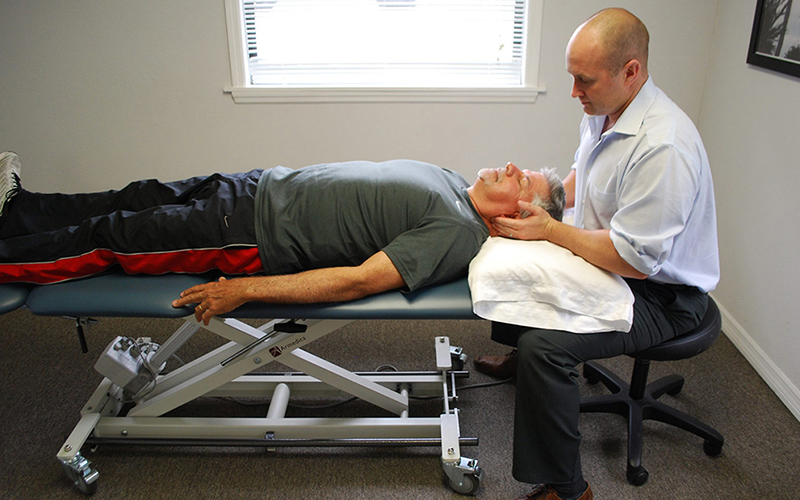
Exclusive one-on-one patient care
While most clinics will give you a limited amount of time with your Doctor, we believe that true results come from consistent one-on-one therapy.
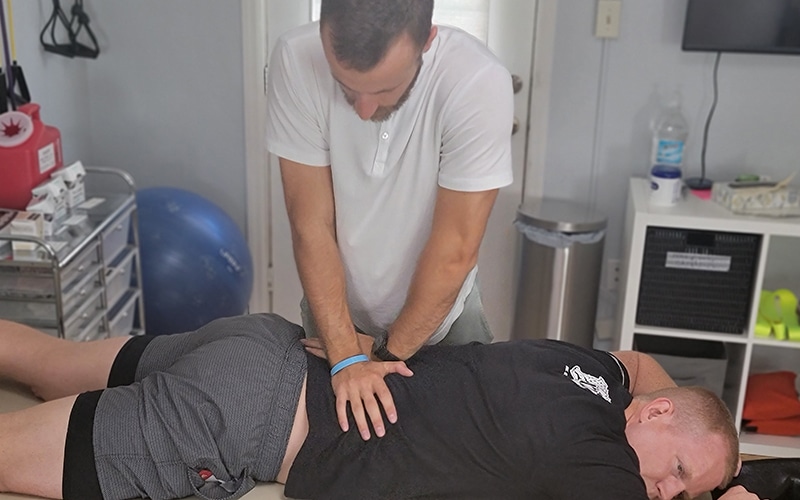
Work with your specialist every visit
Stop being handed off to trainees or non-Doctors for your Physical Therapy. At Pursuit, you'll work exclusively with your Doctor of Physical Therapy that specializes in your specific needs.
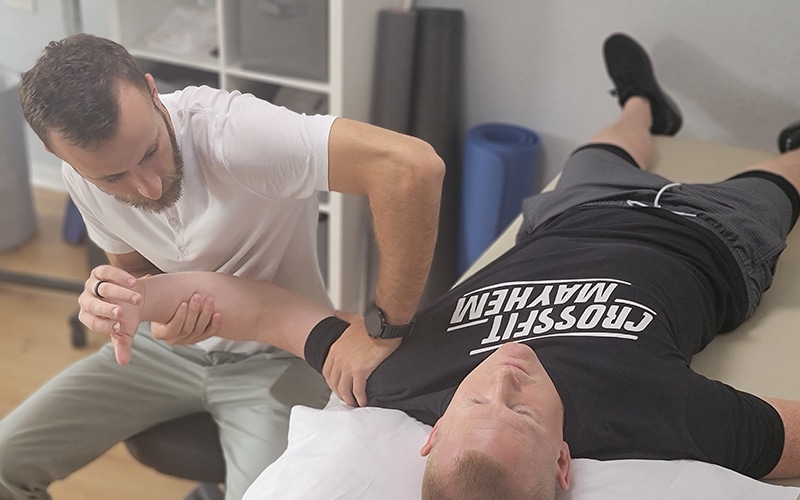
24/7 messaging access to your specialist
Ever have an issue or questions? We're here to help. Get 24/7 access to your specialist while you're under our care. Physical Therapy doesn't just happen when you're in our clinic, so we're here for you when you need us.
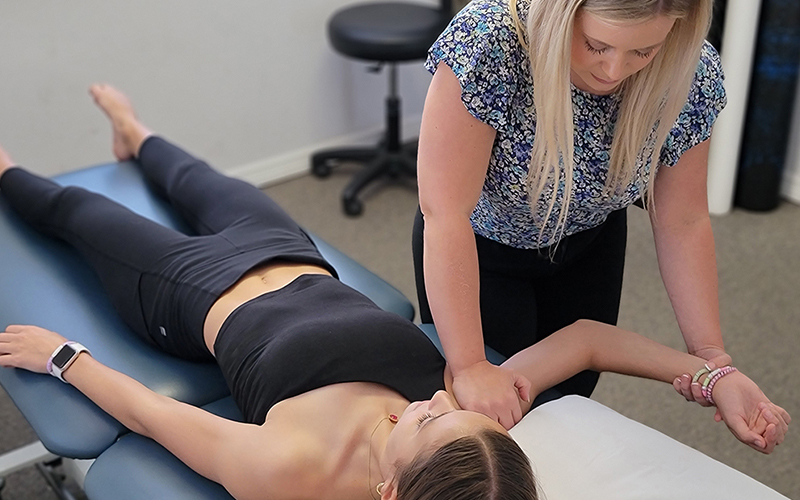
No waiting periods
Get off that waiting list and get the treatment you need. We're always ready to accept new patients, so you can get better faster and get back to a pain-free life that you deserve.
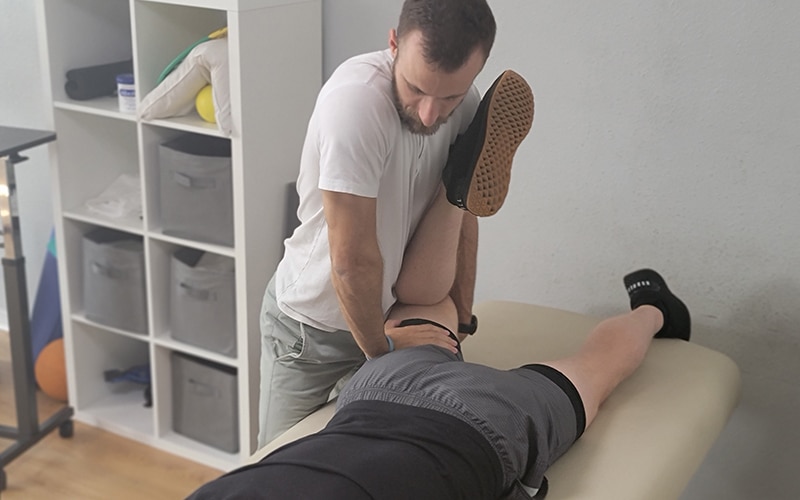
Not limited by insurance
Don't let the insurance companies tell you how much treatment you need. Avoid the limitations of short sessions that insurance provides and work with our Doctors when you need it and for as long as you need it.
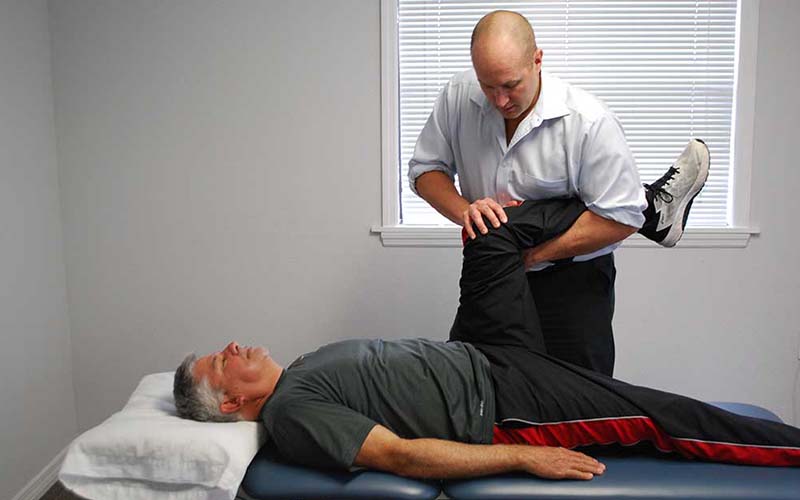
No painful injections, no expensive medications, no surgery
In order to truly solve your pain, we use a holistic approach to Physical Therapy, not relying on injections, medications, or surgery. Instead, we'll strengthen your body's weak points that are causing your pain.
MEET THE TEAM

RON MILLER, DPT, OCS, Cert DN
Doctor of Physical Therapy | Board Certified Orthopaedic Physical Therapy Clinical Specialist | Post-Doctoral Orthopaedic Residency Trained | Certified in Dry Needling | Titleist Performance Institute Certified
Dr. Ron Miller is the owner and founder of Pursuit Physical Therapy. His core belief is that it is not about the physician, the physical therapist, or the insurance company: it is about what is truly best for the patient. Dr. Miller started...

CAREY ROTHSCHILD, DPT, OCS, SCS, CSCS, CKTP
Doctor of Physical Therapy and Assistant Professor at the University of Central Florida | Board Certified Orthopaedic Clinical Specialist
| Board Certified Sport Clinical Specialist
Dr. Carey Rothschild is an Assistant Clinical Professor in the Doctor of Physical Therapy Program at the University of Central Florida. Dr. Rothschild earned a Bachelor of Health Science in Physical Therapy in 1999 from the University of Florida and a Doctor of Physical Therapy from Boston University in 2005...


MICHAEL FABRICK, DPT, Cert. DN
Doctor of Physical Therapy | Certified in Dry Needling | Pursuit Sports Performance Specialist | Professional Tennis Tour Physical Therapist
Dr. Michael Fabrick was born and raised in Hanover, Pennsylvania and attended Slippery Rock University where he received his Bachelor’s degree in Exercise Science. He then went on to receive his Doctorate Degree in Physical Therapy in May of 2020. During his final tenure as a Doctoral intern, he trained underneath Todd Ellenbecker, who is one of the world’s leading experts on shoulder rehabilitation and is the Vice President of Medical Services for the ATP World Tour...

MARYANN DANIELS, PT, MCMT, IDN
Physical Therapist | Dry Needling Certified | Mastery Certified In Manual Therapy | Pelvic Floor And Post Partum Specialist
Maryann was originally born in Connecticut but moved to Florida with her family at the age of 9 and she grew up in Jupiter, Florida. She then went to college at the University of Central Florida...


Kayla Cook, DPT, HSP, CSCS
Doctor of Physical Therapy | Hesch Sacroiliac Practitioner | Certified Strength And Conditioning Specialist | Ehlers-Danlos Syndrome Specialist | Volleyball Specialist
Dr. Kayla Cook was born and raised in Northern California and received her undergraduate degree in Kinesiology from California State University in Sacramento. She then received her Doctorate in Physical Therapy from The University of St Augustine for Health Sciences...
BECOMING PAINFREE IS EASIER THAN YOU THINK

Step 1:

Step 2:

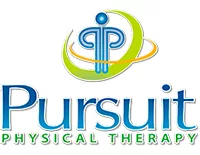
 Anne E.
Anne E. Lisa B.
Lisa B.